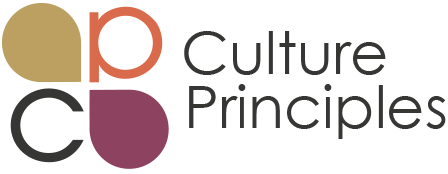 I recently sat in on the keynote delivered by Natalie Burke at the Maryland Nonprofits conference. She introduced the concept of the oscillating narrative, or how we build resilience through open discussions of successes, failures, and all the points in between.
I recently sat in on the keynote delivered by Natalie Burke at the Maryland Nonprofits conference. She introduced the concept of the oscillating narrative, or how we build resilience through open discussions of successes, failures, and all the points in between.
While Burke spoke of the oscillating narrative framed around nonprofits, covid, and the stories we tell about our organizational journeys, I saw an immediate overlay of this framework in how we think and speak about our DEI efforts.
I am reflecting on the idea that our stories and narratives as leaders and organizations are much more nuanced and complex than we often let on. We often tell our “ascending” stories. The moments where everything is great, money is flowing, clients are being served effectively, and our impact is clear. In essence, we are on top of our game.
What does not get explored as frequently is the “descending” story, where things are not running as planned. There are team conflicts, we have to contend with a round of layoffs, or there is a dip in service quality. These are the moments where the struggle is real. These are also the moments we tend to leave out of the narrative.
As a result, we have an unbalanced perspective on what it means to be successful. We are witnessing and celebrating one side of the story, and it is often the narrative that makes us look good.
A focus on perfectionism and, subsequently, an image can lead us to miss opportunities to improve while simultaneously signaling to millions of people that they are not enough because they can’t keep up with this carefully crafted storyline.
I often hear people interested in pursuing DEI strategies ask, who is doing the best work? Who are the leaders we should try to emulate? These are good starting questions, but what were the lessons learned beyond an initial scan of the field? Were there particular barriers successful companies encountered, and if so, how did they address them? How might our company approach this differently with this knowledge in hand?
I appreciate the desire to jump in with proven best practices and strategies and realize other ingredients come together in the recipe that may be less openly discussed. As we experience an increasing amount of DEI fatigue, it is vital to understand better what is happening behind the scenes. As with many things in life, our outcomes do not simply improve overnight, nor do they occur without some stumbling blocks on the road to success.
What would it look like for more organizations to pull back the curtains when it’s time to talk about the things that have gone wrong? Or for leaders in the field to not only pat themselves on the back, but create an ongoing dialogue around how they increased their understanding of DEI principles, weathered difficulties, created organizational buy-in, built a more resilient workforce, and ultimately learned from their mistakes.
In considering what additional ROI we could tap into, let’s not pass up the opportunity to lead with a sense of curiosity, encourage risk-taking and experimentation, and then openly share a more complete version of our stories. It might just give you a competitive edge with stakeholders looking for more than a curated version of your story.
Has your organization taken steps towards publically discussing its diversity, equity, and inclusion journey?
